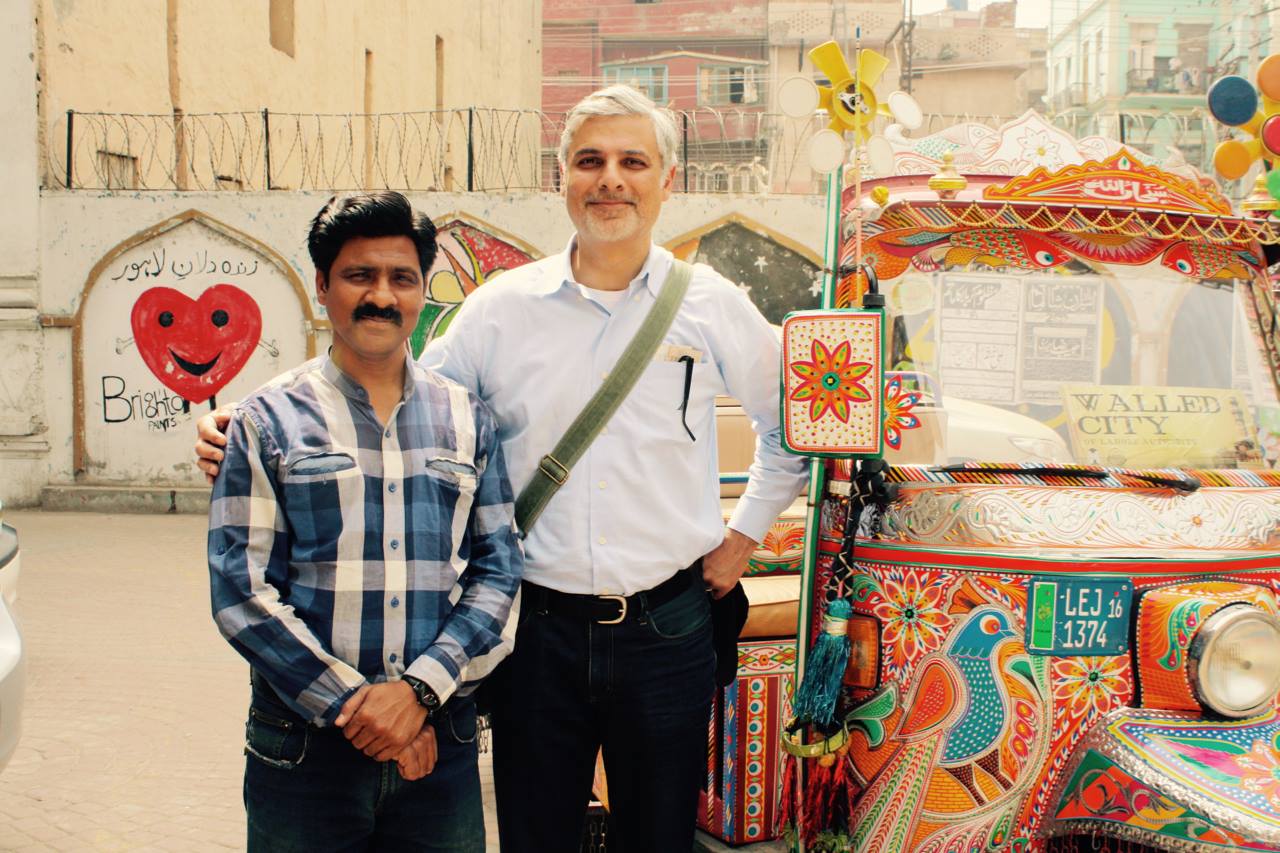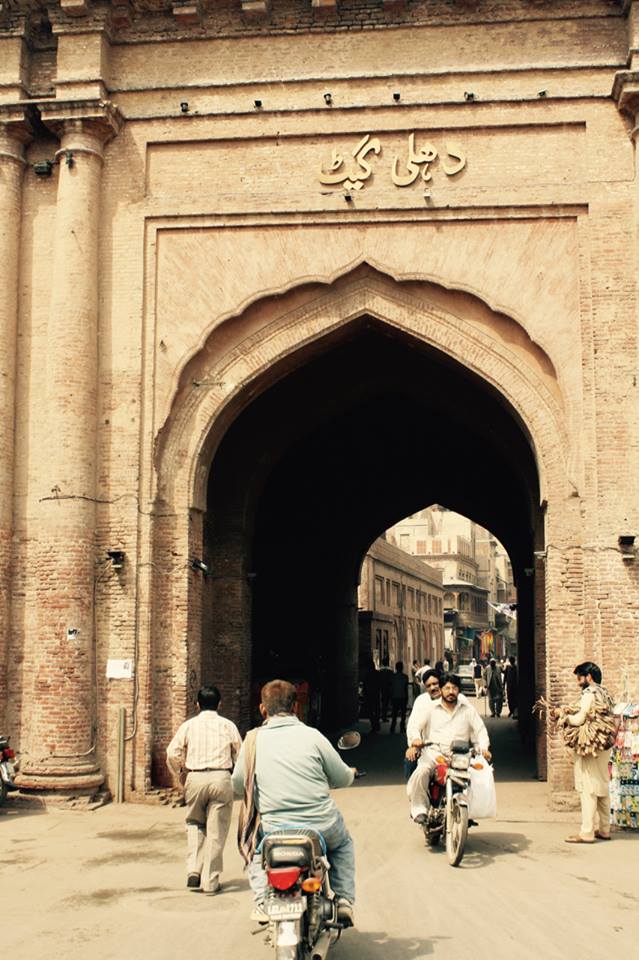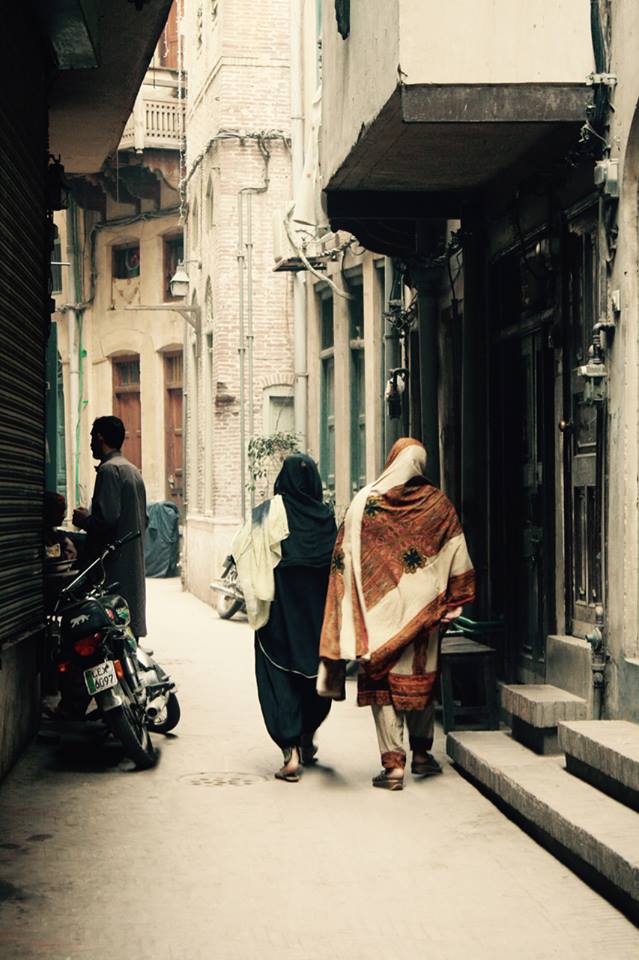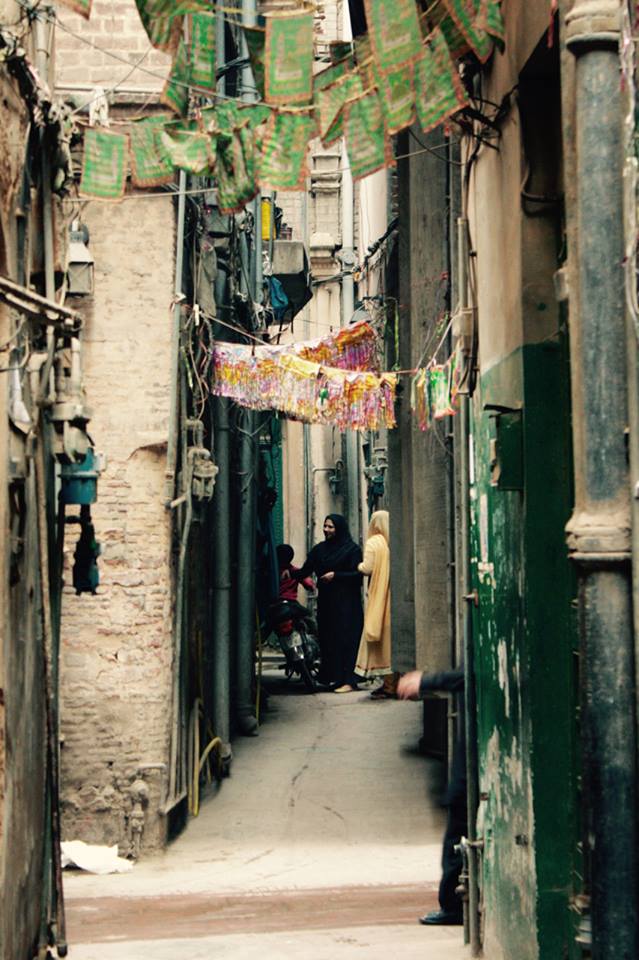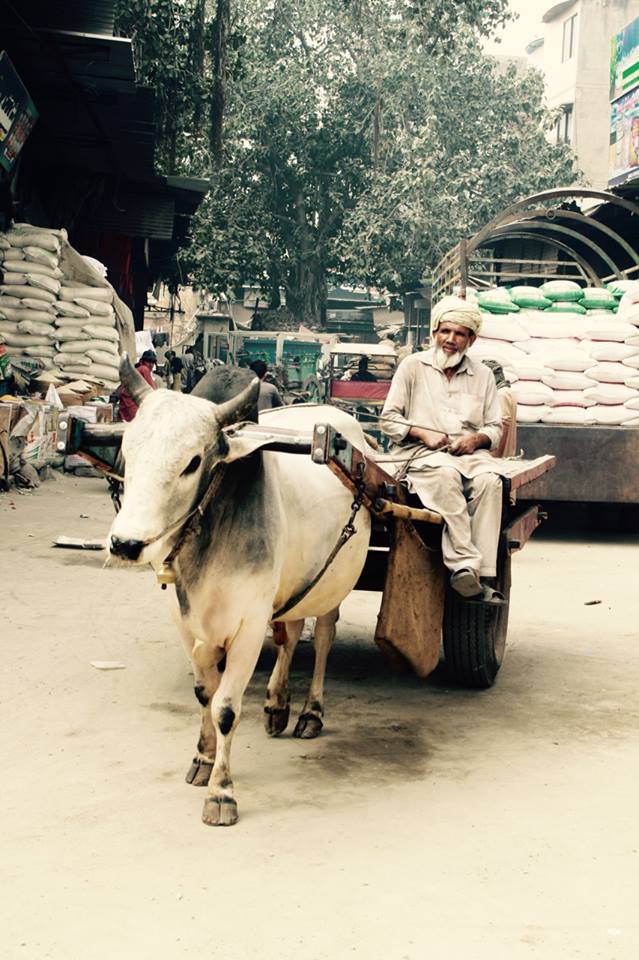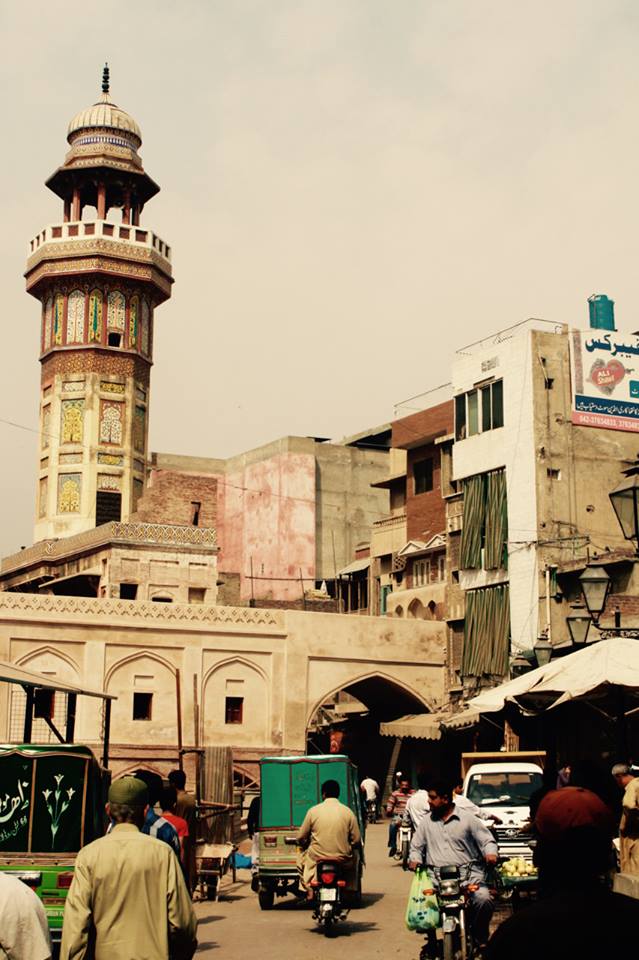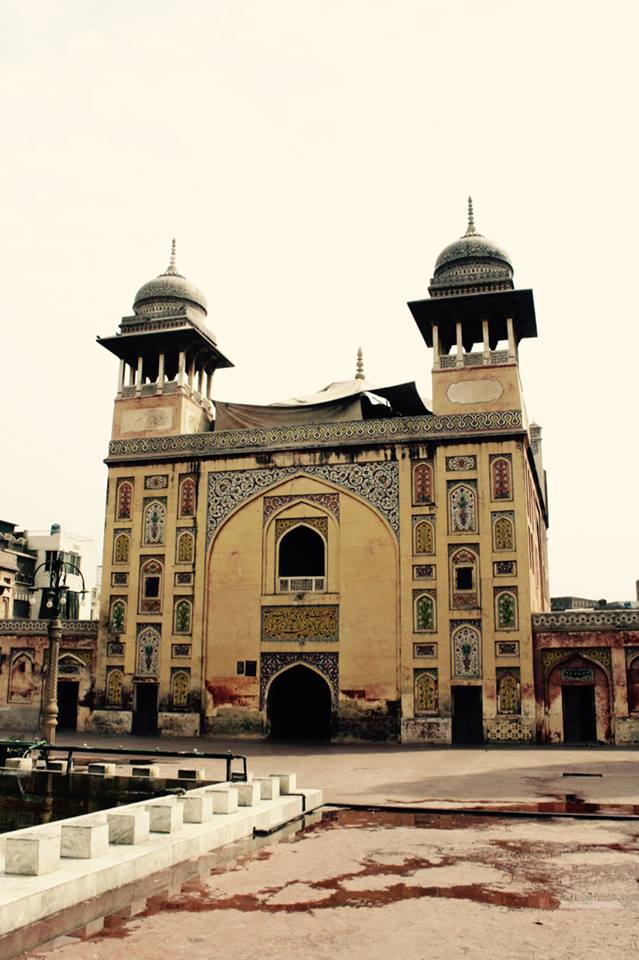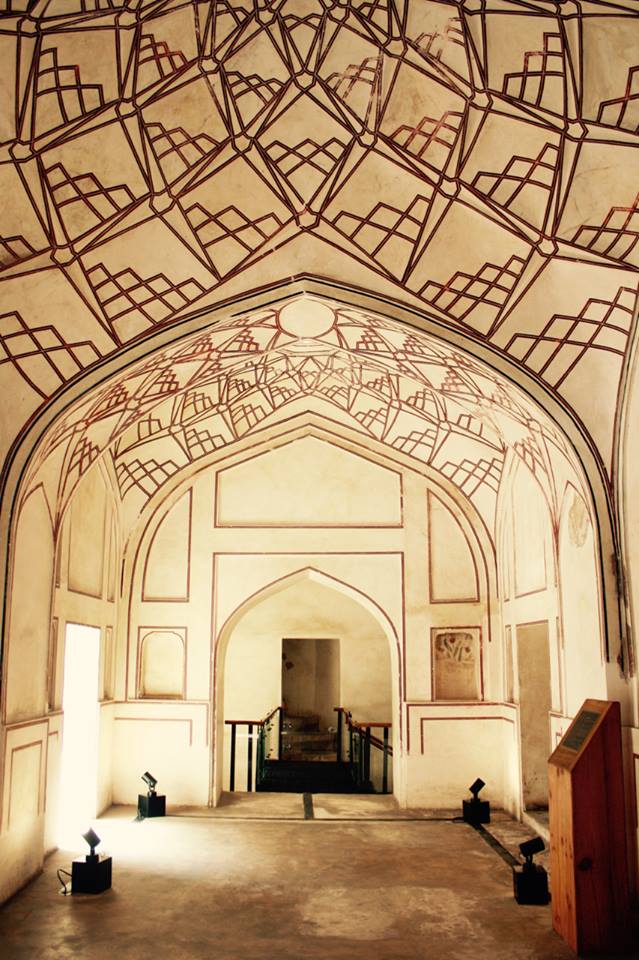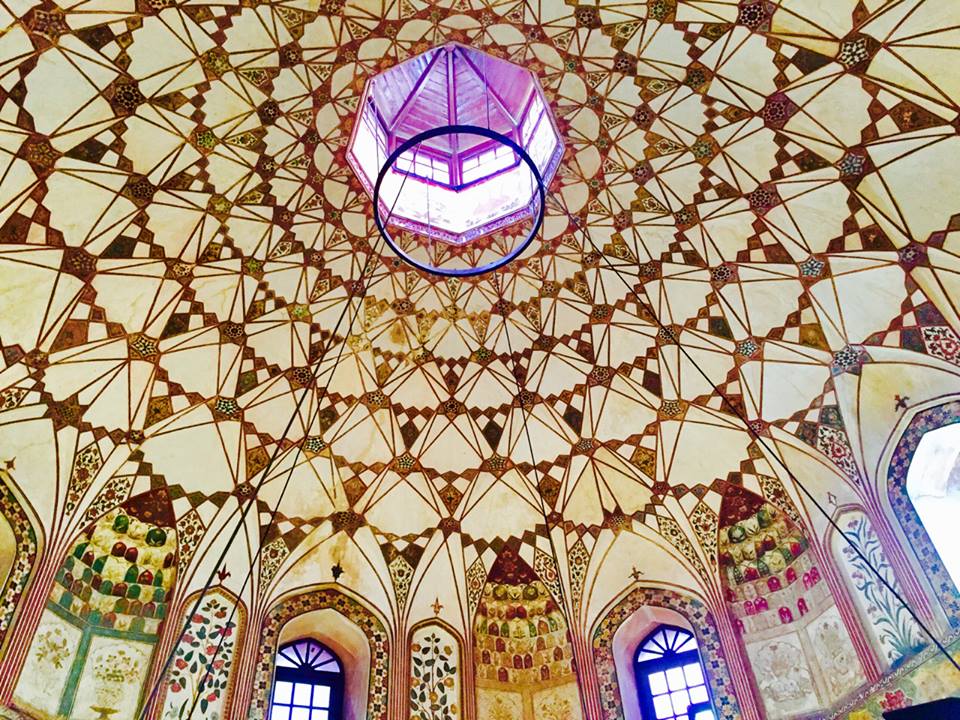we took the rangeela rickshaw tour yesterday to explore lahore’s old walled city. the northwestern part of lahore was fortified by a hefty wall during mughal rule. there used to be 13 gates into the city – only 6 survive. the rest were demolished by the british in order to defortify lahore after the war of independence (which they still like to call a “mutiny”) in 1857.
old lahore breathes history. i’ve always loved everything about it – its narrow circuitous streets, spice markets, busy bazaars, ancient havelis with bamboo chick blinds and balconies carved with intricate, lacelike woodwork, its fruit vendors and ornate mosques, and the continued vigor of its people (many families have lived here for centuries). i was happy to learn that proper sewerage systems have been installed in many parts of the inner city and that power lines have gone underground. hope that important work continues.
i had already visited the wazir khan mosque, more than a decade ago. its vibrant images appear regularly in my work. built in the 17th century to enclose the tomb of sufi saint miran badshah, the mosque used to be part of a larger complex with stalls for calligraphers and bookbinders. it is embellished with stunning frescoes and tiles and elaborate persian motifs, such as cypress trees and star shaped flowers. architectural ornamented vaulting inspired by the alhambra (islamic spain) can also be found in the mosque. a true feast for the eyes.
what i enjoyed most on this guided tour were the shahi hammam (royal bathhouse) excavation of which has been completed recently and the life story of our guide.
right inside of delhi gate (one of the gates into lahore’s walled city, it used to open onto the only road that went from lahore to delhi – appropriately enough, there is a lahori gate in the old city of delhi), is the shahi hammam. built in 1635 by the then governor of lahore. in line with persian design, the bathhouse boasts plenty of natural sunlight via skylights placed in the center of dazzling high ceilings, heated floors, excellent ventilation, a dressing area, warm baths, and a sauna. pictures show what the baths must have looked like back in the day. stunning.
finally, i was extremely moved by the story of our guide, muhammad javed, who grew up in the walled city. he was born into a family of musicians and told us how he hated the word mirasi (genealogists and traditional singers and dancers in india and pakistan). it is a word that comes with a lot of caste baggage and is used as a pejorative in this part of the world. javed rebelled against this vile casteism and resisted becoming a tabla player in spite of the pressure from his father. he sold snacks, boiled eggs, newspapers, barbecued meat at various times in his life, but continued to go to school. he supplemented his income by tutoring other students and was able to graduate. he loves the history of inner city lahore and so became involved in tourism. he is now in the final stages of writing a book and his tours are requested by visiting heads of state. he has 4 kids and on top of teaching them urdu and english, he is also teaching them german, chinese and italian. he wants them to be active citizens of the world.
this is the kind of chutzpah and ambition that i love in the people of pakistan. our driver, who has been kindly taking us around the city, is the same. he lives alone in lahore and visits his family in gujranwala once or twice a month. whatever he makes he sends home. he and his wife are completely invested in the education of their two kids. they don’t just depend on schools. for example, they also teach their kids iqbal’s revolutionary poetry. how cool is that?

